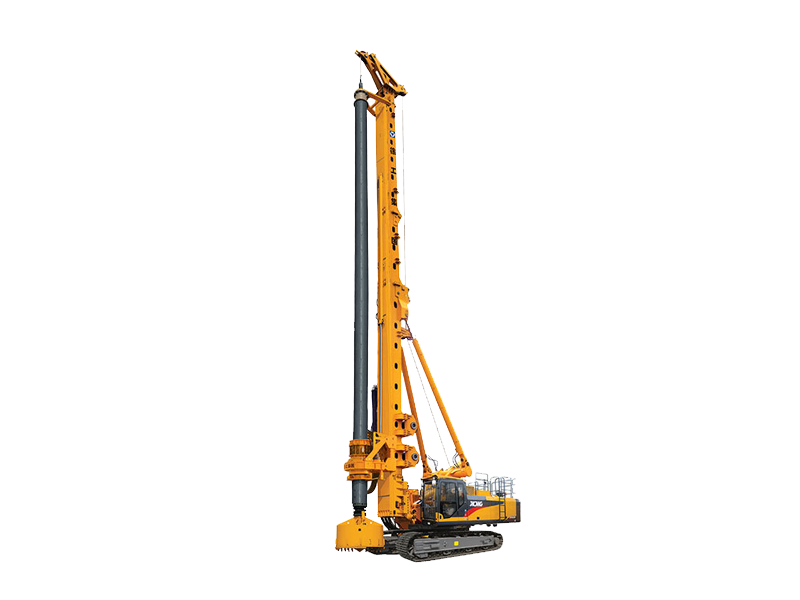Rotary Drilling Rig Maintenance Guide
Release Time:
Jul 16,2025
Rotary drilling rigs are essential pieces of equipment in the drilling industry, used extensively for various applications such as oil and gas exploration, water well drilling, and construction.
Rotary drilling rigs are essential pieces of equipment in the drilling industry, used extensively for various applications such as oil and gas exploration, water well drilling, and construction. To ensure optimal performance and longevity, regular maintenance is crucial. This guide provides a comprehensive overview of the key maintenance practices that should be followed for rotary drilling rigs.
Understanding the Importance of Maintenance
The primary purpose of maintenance is to prevent equipment failure and extend the lifespan of the drilling rig. A well-maintained rig not only performs better but also enhances safety on the job site. Regular maintenance helps to identify and address potential issues before they escalate into costly repairs or downtime. It also ensures compliance with industry regulations and standards, thereby protecting both the operators and the environment.
Daily Maintenance Checks
Daily maintenance checks are vital to ensure that the rotary drilling rig operates smoothly. Operators should conduct a thorough inspection at the beginning of each workday. Key areas to focus on include:
1. Fluid Levels: Check the hydraulic fluid, engine oil, and coolant levels. Top up any fluids that are low to prevent overheating and ensure smooth operation.
2. Visual Inspection: Look for any signs of leaks, wear, or damage. Pay close attention to hoses, seals, and connections.
3. Safety Equipment: Ensure that all safety equipment, such as fire extinguishers and first aid kits, are in place and functional.
4. Electrical Systems: Inspect the battery and wiring for corrosion or loose connections. Ensure that all lights and signals are operational.
By conducting these daily checks, operators can quickly identify any potential issues and address them before they impact the rig’s performance.
Weekly and Monthly Maintenance
In addition to daily checks, more in-depth maintenance should be performed on a weekly and monthly basis. This includes:
1. Lubrication: Regularly lubricate all moving parts, including bearings, gears, and joints. This helps reduce friction and wear, ensuring smooth operation.
2. Filter Replacement: Change the hydraulic and air filters as per the manufacturer’s recommendations. Clogged filters can lead to decreased performance and potential damage to the rig.
3. Inspection of Structural Components: Examine the rig’s structural components for any signs of stress or damage. This includes the mast, derrick, and substructure. Look for cracks, rust, or deformation.
4. Electrical System Maintenance: Inspect electrical connections and components for signs of wear or damage. Replace any frayed wires or faulty components to prevent electrical failures.
5. Calibration and Testing: Regularly calibrate instruments and test the rig’s systems to ensure accuracy and functionality. This includes pressure gauges, depth indicators, and safety shut-off systems.
Annual Overhaul
An annual overhaul is a more comprehensive maintenance procedure that should be performed by qualified technicians. This involves:
1. Complete Disassembly and Inspection: The rig should be disassembled to allow for a thorough inspection of all components. This includes checking the engine, transmission, and hydraulic systems.
2. Replacement of Worn Parts: Any worn or damaged parts should be replaced during the overhaul. This can include bearings, seals, hoses, and filters.
3. Engine and Transmission Service: The engine and transmission should be serviced according to the manufacturer’s specifications. This may involve changing the oil, replacing spark plugs, and adjusting timing.
4. Hydraulic System Maintenance: Inspect the hydraulic system for leaks and wear. Replace hydraulic hoses and seals as necessary to prevent system failures.
5. Documentation: Keep detailed records of all maintenance performed, including dates, parts replaced, and any issues encountered. This documentation can be invaluable for future maintenance and for tracking the rig’s performance over time.
Training and Safety Considerations
Proper training for operators and maintenance personnel is essential for effective maintenance practices. Operators should be trained not only in the operation of the rig but also in recognizing potential maintenance issues. Regular safety training sessions should be conducted to ensure that all personnel are aware of the safety protocols and emergency procedures.
Additionally, it is important to use personal protective equipment (PPE) during maintenance activities. This includes gloves, helmets, safety glasses, and steel-toed boots. Ensuring a safe working environment minimizes the risk of accidents and injuries during maintenance procedures.
Conclusion
Maintaining a rotary drilling rig is a crucial aspect of ensuring its longevity and performance. By following a structured maintenance schedule that includes daily checks, weekly and monthly inspections, and an annual overhaul, operators can significantly reduce the risk of equipment failure. Investing time and resources into proper maintenance not only enhances the efficiency of the drilling operation but also ensures the safety of all personnel involved. With a proactive approach to maintenance, rotary drilling rigs can continue to operate effectively in various challenging environments for years to come.



